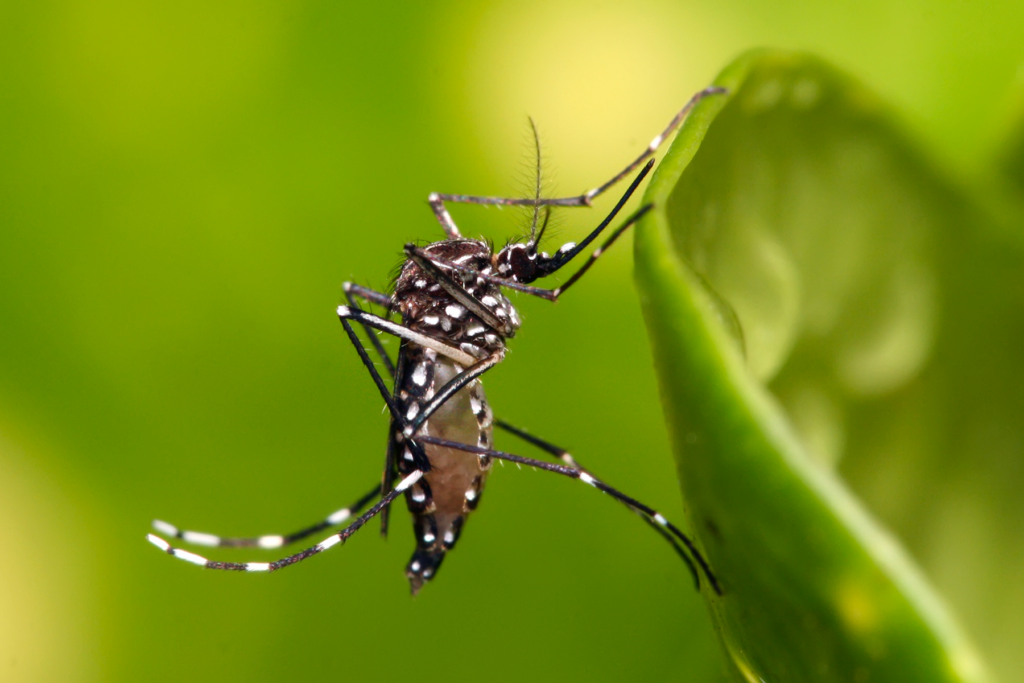Breakbone fever: Dengue will soon pose a “major threat” to US, the WHO says
By Matt Field | October 6, 2023
 An Aedes aegypti mosquito. Credit: Muhammad Mahdi Karim via Wikimedia Commons. GNU Free Documentation License 1.2.
An Aedes aegypti mosquito. Credit: Muhammad Mahdi Karim via Wikimedia Commons. GNU Free Documentation License 1.2.
Thanks to global warming, the last eight years have been the hottest on record. Now, along with wildfire smoke and stronger storms, climate change may soon deliver to parts of the world yet another unwelcome gift: dengue, a disease so unpleasant to experience that its nickname is breakbone fever.
Higher global temperatures promise to make dengue a major threat in the southern United States, southern Europe and new areas of Africa within this decade, World Health Organization (WHO) Chief Scientist Jeremy Farrar told Reuters. “We need to really prepare countries for how they will deal with the additional pressure that will come … in the future in many, many big cities,” the wire service reported Friday.
A disease carried by Aedes aegypti mosquitos, dengue causes an estimated 100 million to 400 million infections a year, according to the WHO. In recent decades, the disease has been characterized as a “neglected tropical disease,” a problem for people in lower-income countries. But the geography of dengue could quickly shift, and experts have been increasingly voicing concern over how climate change might affect dengue’s spread, and that of other diseases, as well.
In July, WHO official Raman Velayudhan told reporters that global warming and other factors, including the sanitary conditions of growing urban areas, can benefit the mosquitos that carry dengue. Half the world’s population is now at risk, Velayudhan said then. Dengue can cause high fevers and result in, as the name breakbone fever implies, severe muscle, bone, and joint pain. The disease is often asymptomatic and most people recover in about a week, according to the Mayo Clinic. Some patients, however, progress to the worst form of the disease: life-threatening dengue hemorrhagic fever, which can involve shock, internal bleeding, and organ failure, first manifesting in symptoms such as bloody gums, stool, and vomit.
Among the countries bearing the brunt of dengue is Bangladesh, where recent government data showed that so far this year more than 1,000 people have died from the disease, a record-breaking figure. Climatic factors appear to be making the country more suitable for dengue-susceptible mosquitos, the WHO reported in August: “Bangladesh’s climate conditions are becoming more favorable for the transmission of dengue and other vector-borne diseases, including malaria and chikungunya virus, due to excessive rainfall, waterlogging, flooding, rise in temperature, and the unusual shifts in the country’s traditional seasons.”
Up until the middle of the 20th century, dengue epidemics were a regular feature in the United States, too. That’s when the Pan American Health Organization set out to eradicate dengue-carrying mosquitos, dramatically suppressing the disease in North and South America for decades. Countries let up, however, and by the 1980s epidemics had returned to parts of the Americas, though outbreaks have been infrequent in the United States. Florida reported several cases of dengue in August.
It’s a problem that may become more common with climate change, a dengue expert at the Centers for Disease Control and Prevention (CDC) suggested.
“Higher temperatures will probably expand the range of places where a mosquito can survive. And then it can also facilitate transmission through other ways, like faster viral replication in the mosquito and increased survival of mosquitoes,” Gabriela Paz-Bailey told CNN in August.
The miasmatic theory of disease, common from the days of Hippocrates through much of the 19th century, held that the weather played a role sparking epidemics. “Unhealthy winds” could transport diseased vapors great distances, the since-discarded concept maintained. Benjamin Rush, a doctor who documented a 1780 epidemic in Philadelphia that many scientists believe was dengue, echoed the theory in his analysis, noting the winds that had been blowing over area swamps. “Moschetoes” were everywhere in the autumn of ’80, he reported. “A certain sign of an unwholesome atmosphere.” Though miasmatic ideas were abandoned long ago in favor of the germ theory, it seems that the climate—as in climate change—will play an important role in disease transmission. And, if Farrar is right, in the case of dengue, that could happen in the United States very soon.
Together, we make the world safer.
The Bulletin elevates expert voices above the noise. But as an independent nonprofit organization, our operations depend on the support of readers like you. Help us continue to deliver quality journalism that holds leaders accountable. Your support of our work at any level is important. In return, we promise our coverage will be understandable, influential, vigilant, solution-oriented, and fair-minded. Together we can make a difference.
Keywords: dengue, mosquitos
Topics: Biosecurity, Climate Change















Dengue story can not be told without mentioning Dengue vaccine trials in the Philippines. Whereas, in the US there may be something called “Emergency Use Authorization”, that aspect gets lost in many places on the globe where people may not even be aware that what they are being given is experimental. What does “informed consent” mean when one does not have the wherewithal to comprehend?